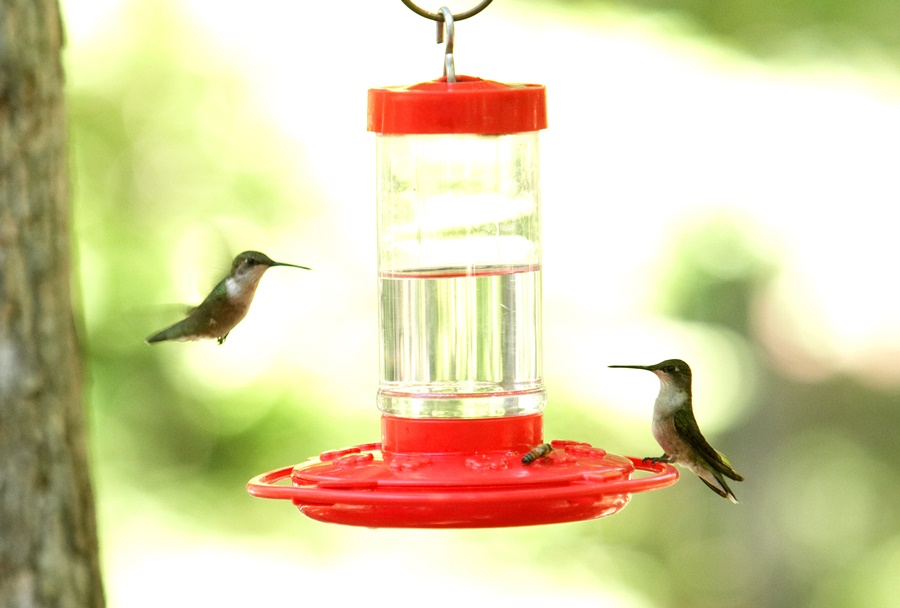Hummingbirds are among the most delightful backyard visitors, known for their dazzling colors, swift movements, and hovering flight. If you want to attract these tiny wonders to your yard, putting out hummingbird feeders at the right time is essential. The best timing depends on your region, the species of hummingbirds in your area, and seasonal migration patterns.
This article will guide you through when to put out hummingbird feeders, how to maintain them, and tips for ensuring a safe and welcoming environment for these beautiful birds.
Why Timing Matters
Hummingbirds migrate based on seasonal changes and food availability. If you set out feeders too late, you might miss early arrivals. Too early, and you risk the nectar freezing or going bad before the birds show up. Proper timing ensures:
- Early migrants have food when they arrive
- You support local populations throughout the season
- Late migrants have nourishment on their journey south
1. Southern United States (e.g., Texas, Florida, Louisiana)
- When to put out feeders: Late February to early March
- Why: Many hummingbirds begin their northward migration in early spring, and southern states often see the first arrivals.
- When to put out feeders: Mid to late April
- Why: Migrants typically reach the Midwest a few weeks after appearing in the South.
2. Northeastern United States (e.g., New York, Massachusetts, Pennsylvania)
- When to put out feeders: Late April to early May
- Why: The cooler northern climate delays the arrival of hummingbirds compared to southern regions.
3. Western United States (e.g., California, Oregon, Washington)
- When to put out feeders:
- California (Southern): Early to mid-March
- Pacific Northwest: Mid to late April
- Why: The West Coast sees a mix of migratory and year-round hummingbird populations, especially species like the Anna’s hummingbird.
4. Northern United States & Canada
When to put out feeders: Early to mid-May
Why: Northern latitudes warm up later, which delays hummingbird migration.
Year-Round Feeding in Warm Climates
If you live in a region where temperatures remain mild year-round (like parts of southern California, Arizona, or Florida), you might see non-migratory hummingbirds throughout the year. In these areas, it's okay to leave feeders up all year, as long as you maintain them properly.
When to Take Down Hummingbird Feeders
Contrary to myth, leaving feeders up in the fall does not stop hummingbirds from migrating. In fact, late feeders can provide vital energy to late-migrating or straggling birds.
Guidelines for removal:
Leave feeders up for 2–3 weeks after seeing your last hummingbird.
In warmer areas, consider leaving at least one feeder up through the winter if you have overwintering species.
How to Prepare for Hummingbird Season
1. Clean Feeders Thoroughly
Before putting out feeders, clean them with a solution of 1 part white vinegar to 4 parts water or hot soapy water. Rinse well to avoid any chemical residue.
2. Mix Nectar at Home
Use a simple nectar recipe:
- 1 part white granulated sugar
- 4 parts water
- Boil water, mix in sugar until dissolved, and let cool.
- Do not add red dye it’s unnecessary and potentially harmful.
3. Place Feeders Strategically
Hang feeders in shady or partially shaded areas to slow nectar spoilage. Position them near flowers or shrubs for natural cover.
Feeder Maintenance Tips
- Change nectar every 2–3 days in hot weather, and every 4–5 days in cooler temperatures.
- Clean feeders regularly to prevent mold and fermentation.
- Watch for ants and bees use ant moats and bee guards if needed.
Conclusion
Knowing when to put out hummingbird feeders is key to supporting these magical birds through their migration and breeding seasons. By following regional guidelines and maintaining clean, well-placed feeders, you can enjoy the dazzling presence of hummingbirds in your yard throughout the year.


